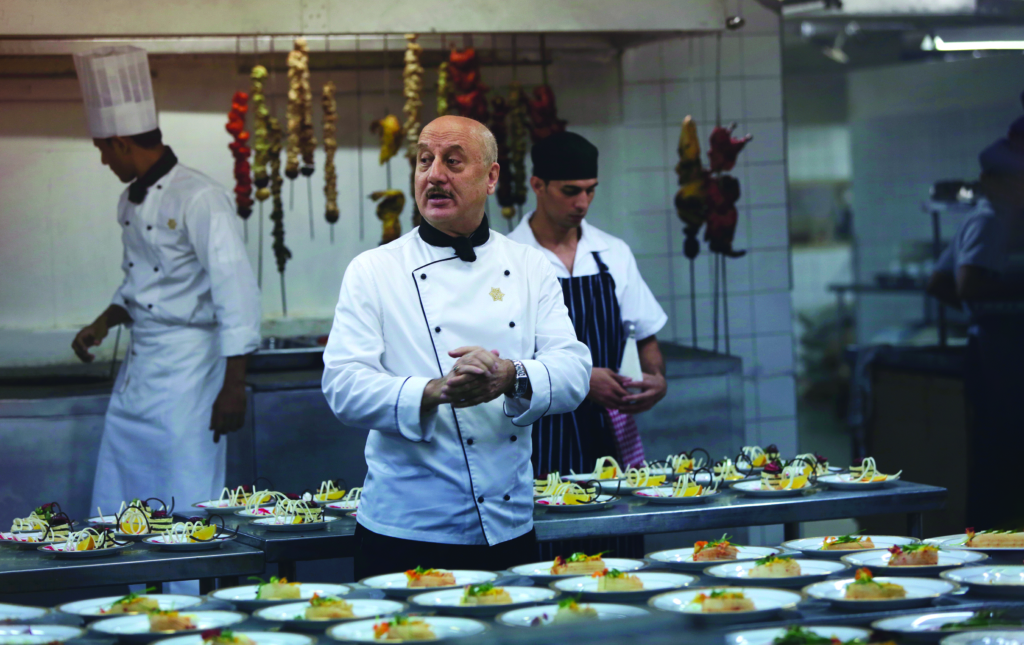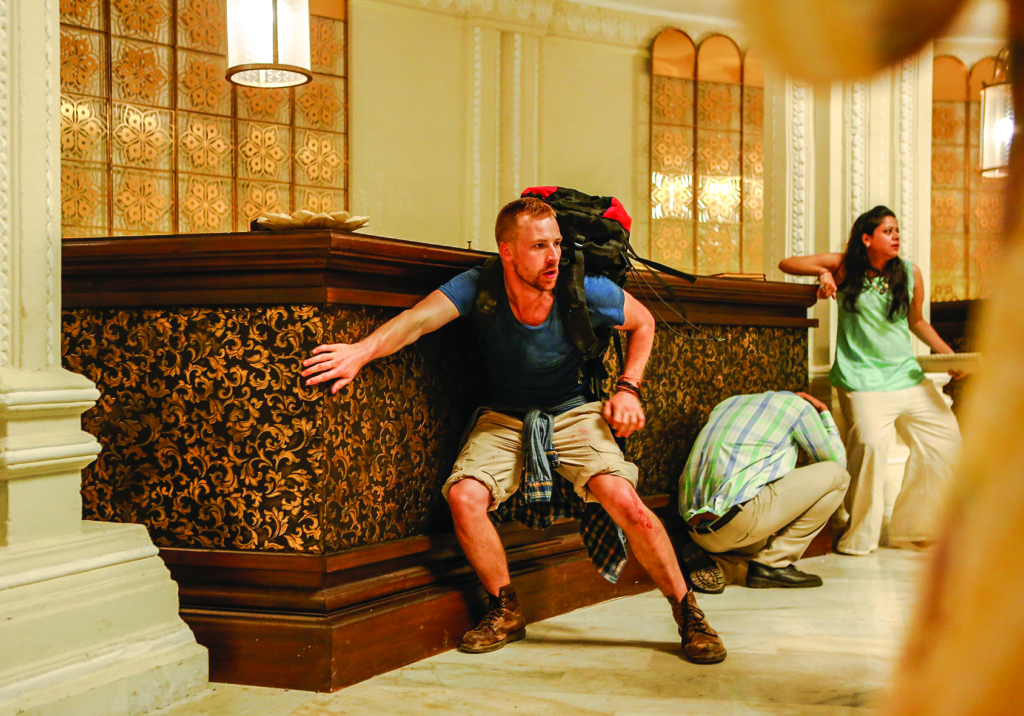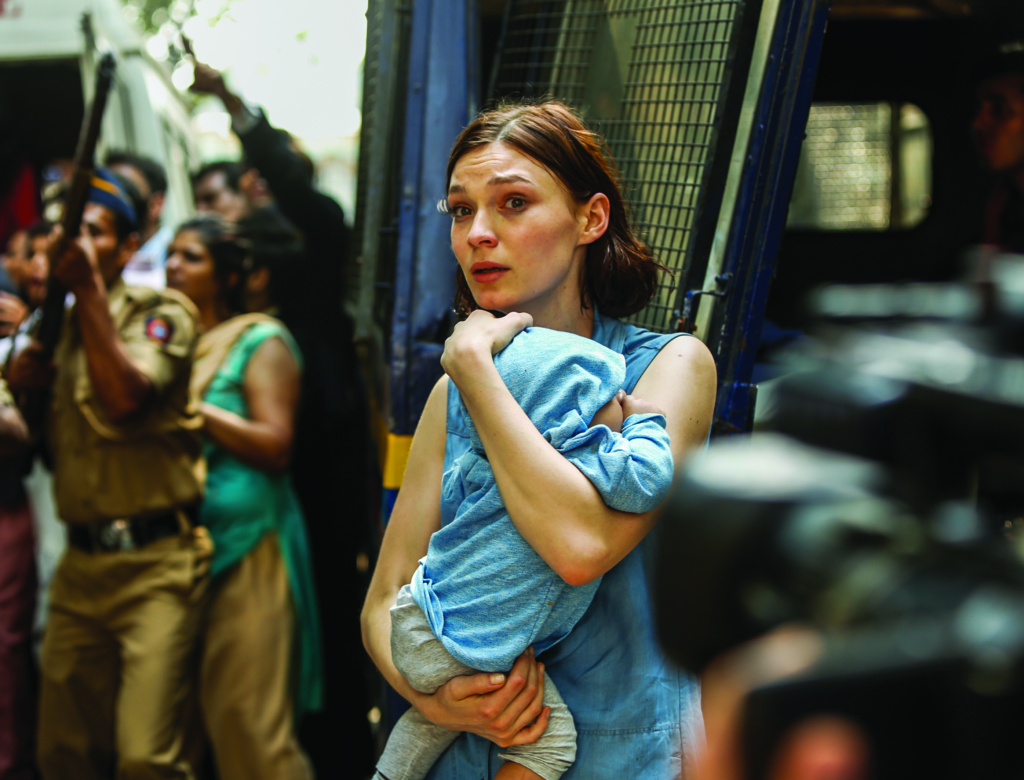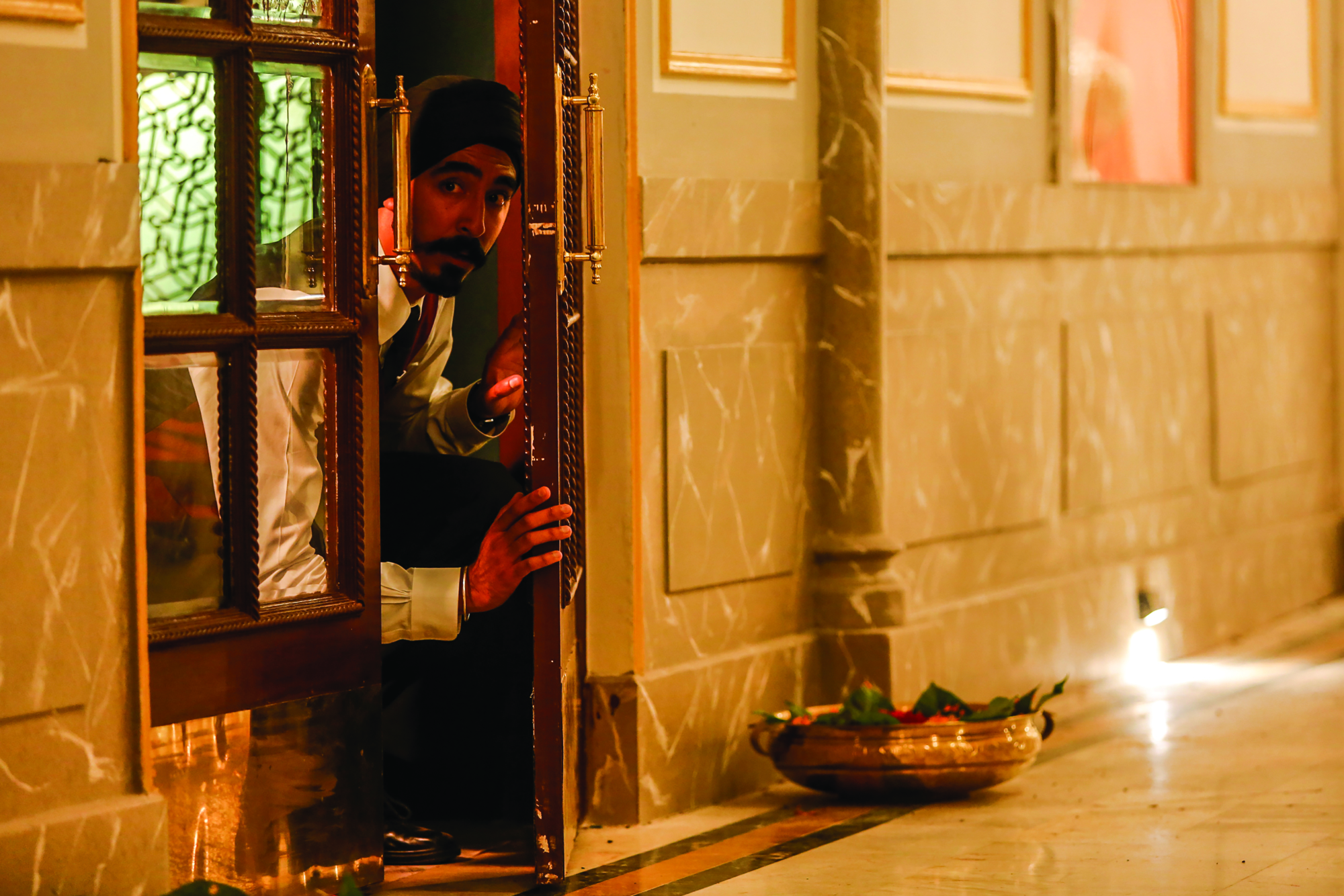I was due to arrive at Chhatrapati Shivaji Maharaj International Airport in Mumbai, India, at 6pm on 26 November 2008. I am able to remember the exact date more than a decade later because, on the very same day, the city was wracked by coordinated terrorist actions that escalated into a three-day siege. A few months earlier, the effects of the global financial crisis had culminated in widespread economic instability on both macro and micro levels, with unemployment at an all-time high. Rattled by these troubling developments and concerned about my own precarious employment situation, I made the decision to cancel my flight and instead remain in London. I can distinctly recall the special BBC announcement that fateful Wednesday, interrupting the broadcast to report on the attacks: around 9.30pm, two men armed with AK-47 rifles had opened fire in the passenger hall of the Chhatrapati Shivaji Terminus railway station, killing fifty-eight people and injuring another 104. The incident at the station was the first of twelve carried out by ten men from the terrorist group Lashkar-e-Taiba: one of the largest Islamic terrorist organisations in South Asia, estimated to have several thousand members. Over the course of four days, approximately 174 people were killed (including nine of the assailants) and more than 300 were wounded.[1]For more on the 2008 Mumbai attacks, see ‘26/11 Mumbai Terror Attack Anniversary: Here Is How the Tragedy Unfolded’, India Today, 26 November 2018, <https://www.indiatoday.in/education-today/gk-current-affairs/story/26-11-mumbai-terror-attack-anniversary-here-is-how-the-tragedy-unfolded-1396307-2018-11-26>; and Shanthie Mariet D’Souza, ‘Mumbai Terrorist Attacks of 2008’, Encyclopædia Britannica, <https://www.britannica.com/event/Mumbai-terrorist-attacks-of-2008>. For more on the terrorist organisation responsible, see ‘Lashkar-e-Taiba’, Mapping Militant Organizations, Stanford University, <http://web.stanford.edu/group/mappingmilitants/cgi-bin/groups/view/79>, all accessed 7 March 2019.
The horrific events of 26/11 are the subject of Greek-Australian director Anthony Maras’ debut feature, Hotel Mumbai, which premiered at the 2018 Toronto Film Festival and had its general release in Australia in March this year. The film is Maras’ second project to be based on real-life events; his critically acclaimed short film The Palace (2011) follows a family seeking refuge during the 1974 invasion of Cyprus, and shares emotional resonance with Hotel Mumbai. While the real-life attacks occurred all over the titular city, Maras focuses primarily on what unfolded in the iconic Taj Mahal Palace Hotel, a five-star luxury hotel in the heart of Mumbai. The film’s diverse ensemble cast includes Indian-British actor Dev Patel as Arjun, a waiter from an extremely impoverished background with a young family at home; Iranian-British Nazanin Boniadi and American Armie Hammer as Zahra and David, a wealthy couple with a newborn baby; and Australian actress Tilda Cobham-Hervey as their nanny, Sally. Some of the characters directly reference real-life figures, such as Anupam Kher’s chef Hemant Oberoi, whom Maras interviewed in preparation for co-writing the film alongside John Collee.[2]Icon Films, Hotel Mumbai press kit, 2018, p. 5. Additionally, Jason Isaacs’ portrayal of Vasili, a playboy businessman with special-forces training, takes after several different people involved in the incident at the Taj Mahal Palace Hotel.[3]ibid., p. 9.

Hotel Mumbai is a well-crafted dramatisation, skilfully balancing the attacks’ complex chronology with economic pacing and exposition. The film opens with the arrival of the gunmen (played by Raunakk Bhnder, Ishan Khanna, Harjeet Singh and Nitin Dhiman) at a fishing village and follows them as they move through the city to carry out carefully planned assaults on the station, nearby cafes and hotels. In 2008, many of the people in these areas fled to the Taj Mahal Palace Hotel seeking refuge. While Maras’ film also makes reference to attacks in surrounding areas through news reports and conversations between characters, the narrative is firmly located within the hotel. The establishing shots of the train station, the hotel and Arjun’s home provide a visual and aural guide to the different spaces and people that the ensuing narrative will revolve around. The use of time and pacing is masterful, with short but strong scenes – Arjun kissing his wife before leaving for work, or a young Australian tourist querying his order at the restaurant moments before the attacks – conveying a considerable amount of detail and providing emotional anchors for the audience. By coupling these ordinary moments with horrifically extraordinary events, the film delivers something of the trauma that an unexpected siege would have on a city.
Enhancing this impact is Maras’ careful unravelling of the story. While there is, of course, a lot of bloodshed in the film, it is not so much the type of violence but rather the way in which it is deployed that is most horrifying. Or, rather, it is the shock of the attacks, along with the unpredictability of the gunmen, that is most affecting: characters are killed at random with little warning, thereby giving viewers no space or opportunity for comprehension or vicarious grieving. Restricting Hotel Mumbai’s narrative to the hotel gives the audience a fixed access point to the events. On a practical level, the incidents at the building act as a representative case study for the broader narratives of survival happening in the surrounding areas. Moreover, the hotel’s reputation as a symbol of opulence creates a jarring dissonance whereby merciless acts of violence are carried out against a backdrop of expansive dining halls, elaborate floral displays and chandelier-lined hallways.

As the establishment remains fully functional, the production team had very limited access and were not able to shoot any of its interior spaces; instead, several of these scenes were filmed in a studio in Adelaide and accompanied by more footage taken at another five-star hotel in Mumbai. In addition, the film features extensive shots of the exterior of the real Taj Mahal Palace Hotel, which contributes to the setting’s verisimilitude. Maraj then juxtaposes these exterior shots with actual news footage from the time[4]ibid., p. 11. – an approach that proves particularly effective, as it blends the depicted drama with the lived experiences of those who suffered through the attacks. In a key scene, several characters are held hostage by the gunmen; David, Zahra and Vasili are among those detained. As they are made to lie face-down with their hands tied behind their backs, the film deftly cuts between them and harrowing news footage of the hotel surrounded by rescue teams, police, and reporters. Also featured are detailed personal accounts, CCTV footage and dialogue between the gunmen and their leaders, sourced from Victoria Midwinter Pitt’s documentary Surviving Mumbai (2009), which inspired Hotel Mumbai.[5]ibid., p. 22. By reproducing exchanges verbatim – including conversations with the Lashkar-e-Taiba leader known only as ‘Brother Bull’, intercepted from mobile-phone records – the film adds a sense of veracity to a situation that could otherwise inspire disbelief.
Films such as Hotel Mumbai that are adapted from real-life events embody a curious duality … The line between fact and fiction creates a tension that is inherently tied to expectations about what the final product should ‘be’ and what it should achieve.
Films such as Hotel Mumbai that are adapted from real-life events embody a curious duality, straddling dramatic feature and documentary. Critical discussion of such works often focuses on where they sit along that continuum: Is it entertaining enough? Is this what really happened? The line between fact and fiction creates a tension that is inherently tied to expectations about what the final product should ‘be’ and what it should achieve. Indeed, Hotel Mumbai is a suspenseful drama with well-rounded characters and a clear narrative trajectory. However, it is also an account of a very specific historical event, and is thus burdened by an immense amount of responsibility to the traumatic past it is depicting. This task is not simply to honour those killed during the attacks, the survivors living in their aftermath, and the families, communities and businesses affected by this loss, along with all the special services and support staff who were pulled into the conflict. The responsibility also encompasses how this event is remembered in the collective memory of the public and whether the filmic representation accurately attends to the complexity of the situation, the contributing factors that brought it into being, and the depth and extensiveness of heartbreak. This is an exceptionally difficult brief for a film to satisfy – and it is clear that Maras and his team have given much thought as to how best to approach considerations such as historical accuracy, public grief and the personal anguish experienced on both individual and societal levels.

Most notably, Maras prioritised establishing a strong base from which to develop the film, conducting extensive research, interviews and site visits prior to shooting. Over the course of a year, Maras and Collee interviewed survivors, hotel guests, police and staff to unpack the complex stories surrounding the tragedy. Many of these interactions informed their creative decisions around characterisation and plot development – Arjun’s character, for instance, was inspired by conversations with different hotel staff, many of whom are living in extreme poverty.[6]ibid., pp. 5–7. Watching Arjun prepare for work, transfer the care of his daughter to his wife at her workplace and then rush to the hotel, only to be dismissed for wearing the wrong shoes, not only invites us into his day-to-day life but also, more broadly, acknowledges the experiential disparities between patrons of the hotel and those residing in lower-socio-economic housing. This disparity in wealth also surfaces when David is held hostage by one of the terrorists in a hotel room. Having been badly wounded, the gunman calls his family to check whether Brother Bull has paid them. The money that was promised has not been received, and, while the family remain optimistic that the figurehead will keep his word, the recruit is unconvinced. This simple exchange – witnessed by David, who remains a silent observer – gestures towards some of the complex networks of vulnerability, faith and financial hardship that might encourage young, angry and impressionable men to become involved in organised-terrorism factions.
In several brief moments, Maras offers the viewer insights into the terrorists themselves. Often, these take the form of interactions that emphasise the men’s youthfulness, such as when one eats something from an abandoned food cart and a fellow recruit tricks him into believing that he has eaten pork. Scenes showing their ability to socialise and joke powerfully generate cognitive dissonance, as we know of the immense bloodshed they have inflicted; at the same time, such images serve to humanise the men. In another scene, Arjun and two policemen, having gained access to black-and-white CCTV footage from hotel security, watch as the gunmen stalk down a hallway, their lithe bodies dwarfed by their assault rifles, the high ceilings and the expansive hallway. Unable to pair this vision with the magnitude of destruction, a policeman say, as if in disbelief: ‘They’re just boys.’ Indeed, the age of the gunmen was something that Maras sought to underline when creating the film: ‘The perpetrators were all young men, barely out of their teens.’[7]Anthony Maras, quoted in ibid., p. 9. In humanising the gunmen rather than casting them as faceless villains, Hotel Mumbai captures the senselessness of situations in which vulnerable young men are radicalised by extremist leaders and turned into agents of terror.

Hotel Mumbai is an ambitious endeavour. Whenever a film’s subject is a historical event with real-life victims and survivors, there is an expectation that the work will faithfully represent the events and stories of all of those involved. Of course this is an impossible aim: the ‘truth’ is an unwieldy and changeable thing. But a notable strength of what Maras has created is the way he has used several key characters to act as representatives for broader and more complex truths. While, during weaker points, these characters sometimes drift into stereotype – the sleazy businessman, the racist older woman, the selfless waiter – ultimately, there is an integrity to Hotel Mumbai’s engagement with these disparate stories and complex narratives. This, I think, is largely owing to how it has been anchored to primary sources such as interviews, news footage and recorded audio from the siege. And it is precisely these voices, images and words that remind us of the extraordinary tragedy of 26/11.
https://www.iconmovies.com.au/movies/hotel-mumbai
Endnotes
| 1 | For more on the 2008 Mumbai attacks, see ‘26/11 Mumbai Terror Attack Anniversary: Here Is How the Tragedy Unfolded’, India Today, 26 November 2018, <https://www.indiatoday.in/education-today/gk-current-affairs/story/26-11-mumbai-terror-attack-anniversary-here-is-how-the-tragedy-unfolded-1396307-2018-11-26>; and Shanthie Mariet D’Souza, ‘Mumbai Terrorist Attacks of 2008’, Encyclopædia Britannica, <https://www.britannica.com/event/Mumbai-terrorist-attacks-of-2008>. For more on the terrorist organisation responsible, see ‘Lashkar-e-Taiba’, Mapping Militant Organizations, Stanford University, <http://web.stanford.edu/group/mappingmilitants/cgi-bin/groups/view/79>, all accessed 7 March 2019. |
|---|---|
| 2 | Icon Films, Hotel Mumbai press kit, 2018, p. 5. |
| 3 | ibid., p. 9. |
| 4 | ibid., p. 11. |
| 5 | ibid., p. 22. |
| 6 | ibid., pp. 5–7. |
| 7 | Anthony Maras, quoted in ibid., p. 9. |





